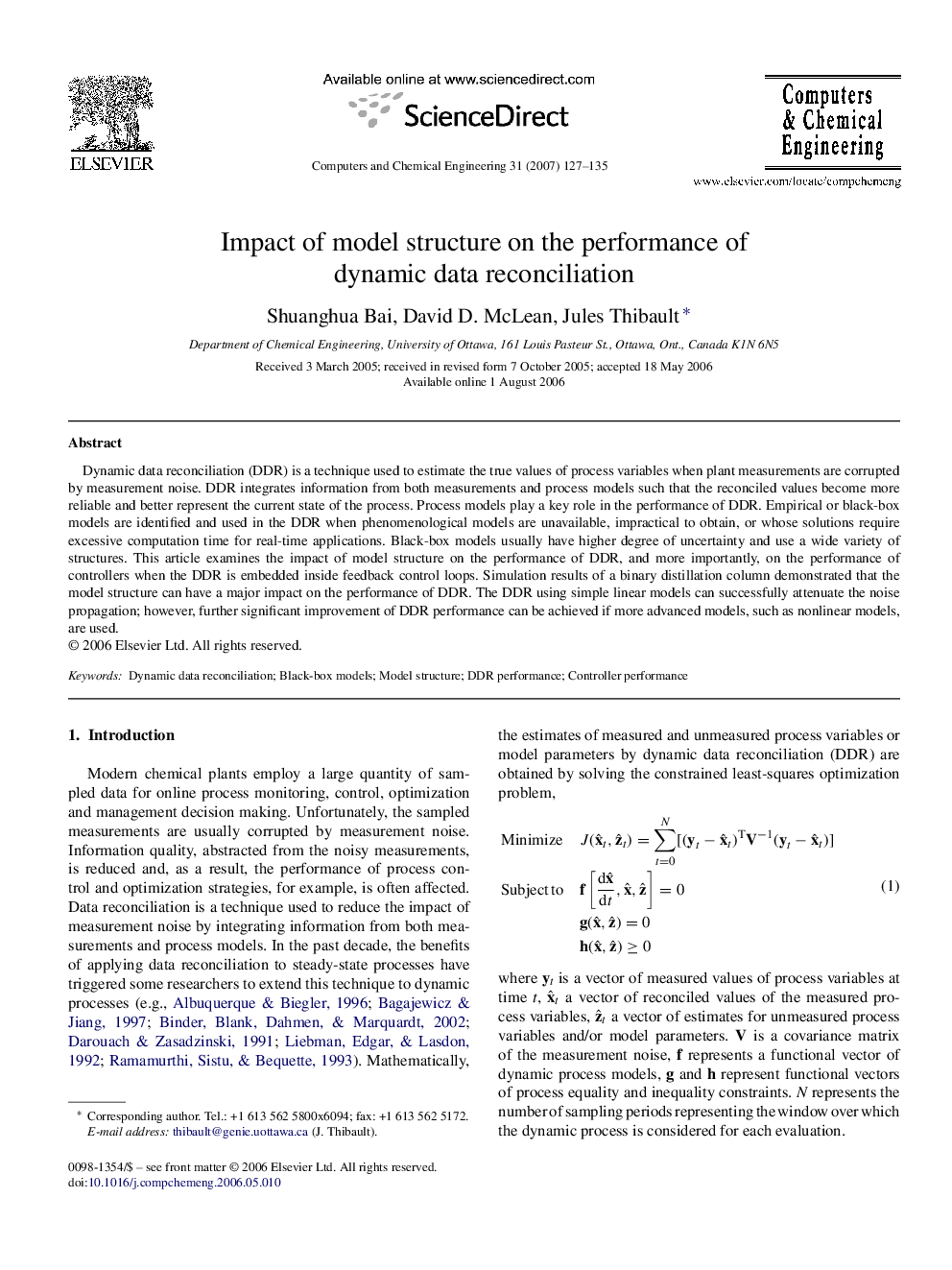| کد مقاله | کد نشریه | سال انتشار | مقاله انگلیسی | نسخه تمام متن |
|---|---|---|---|---|
| 173914 | 458617 | 2007 | 9 صفحه PDF | دانلود رایگان |

Dynamic data reconciliation (DDR) is a technique used to estimate the true values of process variables when plant measurements are corrupted by measurement noise. DDR integrates information from both measurements and process models such that the reconciled values become more reliable and better represent the current state of the process. Process models play a key role in the performance of DDR. Empirical or black-box models are identified and used in the DDR when phenomenological models are unavailable, impractical to obtain, or whose solutions require excessive computation time for real-time applications. Black-box models usually have higher degree of uncertainty and use a wide variety of structures. This article examines the impact of model structure on the performance of DDR, and more importantly, on the performance of controllers when the DDR is embedded inside feedback control loops. Simulation results of a binary distillation column demonstrated that the model structure can have a major impact on the performance of DDR. The DDR using simple linear models can successfully attenuate the noise propagation; however, further significant improvement of DDR performance can be achieved if more advanced models, such as nonlinear models, are used.
Journal: Computers & Chemical Engineering - Volume 31, Issue 3, 19 January 2007, Pages 127–135